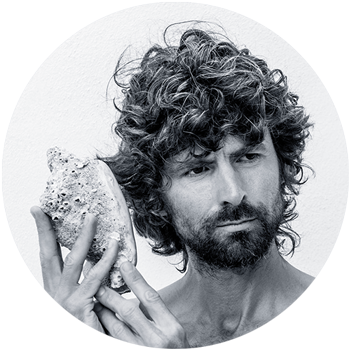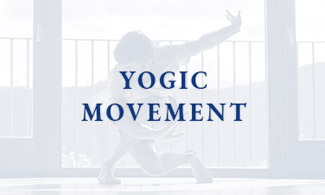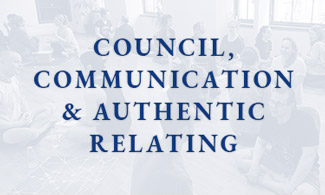
What is Practice – Mysore Morning Freewrite 4th March 2018
What is practice?
Life is practice. Life, as it is said, is the field of bondage, and the field of liberation.
Yoga techniques are preparation for the practice that is life.
We get what we need. If we have to grunt and sweat through extended, convoluted āsana regimes, if we have to work our way through myriad meditation techniques, let us not delude ourselves about the grandeur of our practice. We are novices, so unadvanced, so cowed, so estranged from our true power and capacities that we need these structured resources to help us regain a sense of our internal compass.
The best ‘yogis’ I have met, without exception, do not knowingly ‘practice yoga’. What they do is live their lives, as themselves.
We get what we need.
We get the techniques we need.
Sometimes our pain, our anger, frustration, disappointment, sorrow, self-sabotage, the degree of our fragmentation, is too much for us to look at.
Techniques help us gradually reclaim our sense of self.
But perhaps the advanced practitioner is boldly facing life, meeting it whole-system on, and so harnessing and harvesting the gifts that nature is constantly offering us to realise who and what we really are.
The glory of nature is its being itself. The apple tree does not try to grow peaches or acorns. The oak does not try to weep like a willow.
When we try to be what others want us to be, we ‘sin’ against nature, we miss ourselves.
Generally, we get techniques from others. Making them our own by working with them discerningly in our own way is an important step towards greater independence, greater freedom, greater kaivalya – all-one-ness: that stage of nascent liberation where we are satisfied in and of ourselves.
It is said that all of us are practising, whether we realise it or not. Life is the practice. Yet it is certainly possible to get lost in technique, to ‘escape’ the real work, the real practice, by making our practice so ‘busy’, that we lose ourselves in it. And we may lose ourselves just as thoroughly as the salaryman caught up in the rat race, so busy working for his pay, providing for his family, and doing all the ‘accoutrement activities’ that his status, family and colleagues expect of him that he has no time to actually notice, never mind fathom and truly know himself.
Sometimes the ‘practitioner’ looks on such rat-racers with scorn.
Yet the masters remind us, again and again, that the other is another you, another me, we only see what is in us. So perhaps this scorn or disdain is really an unacknowledged self-loathing, and perhaps it’s really about our not showing up as fully as we say we do or would like to.
As long as our actions, speech and ideas are divided, we will suffer. As the subhāṣita (Sanskṛt wisdom proverb) renders it:
Manasyekam vacasyekam karmaṇyekam mahātmanā
Manasyanyat vavcasyanayat karmaṇyanyat durātmanā
The one whose thought, speech and action are one is a great soul. The one whose thoughts are one thing, speech another and action different again is a soul in torment and pain.
…
Certainly, technique is tremendously valuable, but perhaps only when we remember what it is for: to foster this type of whole system cohesion. So we might check, is our ‘practice’ actually helping us practice yoga? Is it helping us develop this greater understanding and integration of ourselves. Or are we hiding behind the sheen of its lustrous exterior? A pure gold chain can bind us just as well as a rusty iron one.
The first teaching in yoga is to look, to be present, to observe, to attune to the witness we really are. The first imperative verb (of instruction and injunction) in the Bhagavad Gītā is paśya ‘look’. The first imperative verb in the Āditya Hṛdayam, in Rāmayāṇa, the hymn of instruction that sage Agastya imparts to Rāma at the moment of his greatest challenge: when Rāma feels ‘out’ of yoga, wracked by doubt, burdened by his past, and all the suffering he has witnessed, anxious about the future, and the possible outcome; the first imperative verb here is sṛṇu ‘listen’.
Yoga techniques are designed and intended to train us in the ways of steady, sustainable vigilance: to deepen our capacity to see and hear, so we might see and hear beyond the confines of our habitual ways of perceiving.
Yogāsana, the seat of yogic awareness is described classically by Patañjali in the Yoga Sūtra as being, at once, both sthira and sukha: both steady and easy. In other words, the seat of yogic awareness is characterised by a presence that is easy and relaxed enough to be truly sustainable.
One of the cornerstones of yoga practice is svādhyāya – self-study. It is our responsibility to check that our practice is serving us, not becoming another entrapment, or entanglement in our life. As my friend Boris Giorgiev says: ‘don’t make your yoga practice another problem in your life. Let it support your life.’ Let it serve you!
As it has been said: ‘The Sabbath is for the man. The man is not for the Sabbath.’
So as I consider all this, I notice that I have noticed myself noticing or perceiving others as ‘escaping’ in practice: exhausting themselves with ‘intense’ practices, filling their days piling technique on technique.
Which points to the recognition that perhaps I’ve been doing something very similar myself!
Yet all the while, all around, Nature, the guru is inviting us to be fully here now.
So can we let the practice serve us? Can we let it support us? Can we summon our discerning awareness to check if we are working with the practice, or if we are hiding in its busyness?

James Boag | Whole Life Yoga
The yoga of the whole human being. Practical philosophy, storytelling, movement, inquiry, looking in ways that reach beyond our habitual ways of looking.
Listen to James’ unique whole life yoga perspectives on the WHOLE LIFE YOGA podcast.











